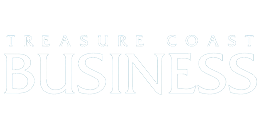Intraprenuers are vital employees if a company is going to succeed
Have you ever had an idea for a new product or service or thought something could be done better? Chances are you have. Because you’re reading this publication, it gives me some idea that you’re interested in business on the Treasure Coast.
You probably fall under one of two categories of work personnel: self-employed or work in a small business such as a small accounting office, dry cleaners, etc. Or you work for a larger company or organization such as Target, Bank of America, or a municipality or government entity such as the City of Stuart, St. Lucie Tax office, etc. Regardless of your job or organization, the reality is that we must change with the times and solve problems for our institutions and customers alike.
Many of us go to work each day, do what’s minimally required, leave at the end of the day and feel satisfied. If you’re a small business owner, this will never be the case. Why? Because small business owners know how important it is to keep ahead of the competition, reduce errors and improve. The question is, how is all of this accomplished?
SAVING COMPANY MONEY
The answer is: internal Intraprenuership. If you’ve not heard the term, it’s time you get familiar with it as it could save your company or organization. The term intrapreneur is given to employees within organizations who exhibit entrepreneurial tendencies. These are employees who are motivated, optimistic and driven to solve problems. They are the idea generators, status quo disrupters and change agents. They can be leaders, managers, supervisors or frontline employees.
Other less interesting characteristics these individuals exhibit are high levels of frustration, concern and impatience. These characteristics arise when they are confronted with policies and procedures that are being touted as the gospel of the department or as they try to solve problems and need support from the team and are confronted with resistance. Many intrapreneurs are frontline workers who see the problem firsthand. This can be an issue with the supplier, customer or internal mechanisms. Often one is actively trying to solve the problem but is met with at best apathy or worst defiance. The result is no change to the problem and a frustrated employee.
We talk about solving problems in terms such as think outside the box or let’s come up with new ideas. When an employee actually does this, we respond with a myriad of reasons why the problem can’t be solved. And just for the sake of this article, we will take the issue of needing more money and personnel off the table [because this is always the way to solve problems, throw more money and hire more personnel].
COMPLEX SUBJECT
Intrapreneurs are frugal and know there is no money in the budget. They realize many of the solutions would not cost the institution a dime. So why don’t we embrace intrapreneurs? The answer is simple and complex at the same time.
The first obstacle is comfort, we all have a comfort zone and we resist anyone messing with it. The second is change and how do we get our employees to embrace change.
Entrepreneurs see something and want to fix it or make it better. Intrapreneurs are cut from the same cloth, they work within an organization and want to change programs for the better.
Entrepreneurs often work by themselves; it’s their idea, their company and only their way. With intrapreneurs, they must work with others. They need to sell their ideas to their colleagues, supervisors and managers. It’s actually harder to be intrapreneurs but they embrace challenges. Each one of these individuals may have a reason not to change the way things are done, so it becomes an uphill battle.
FEARING CHANGE
Our organizations create a stable environment, which cause us to do things efficiently for ourselves with as little disruption as possible. There is a natural inclination within an organization to fear change and people may ask: What if it doesn’t work? We will look like fools. Who gets the blame for it? Not me.
We want to solve problems, design new products and create better systems, but find it to be quite arduous and exhausting to get it done.
What can leaders and managers do?
First, they can change the culture and encourage more ideas. Managers can hold staff meetings once a month at which employees must present three new ideas or identify problems that need to be solved.
Second, leaders must empower and promote proactive employees.
Third, we will not tolerate the status quo, together we must create a culture of continuous quality improvement.
This will not be easy. Disrupting and changing a culture can cause fear, anxiety and stress among employees. But if leaders really want to make the organization better, they must take the shackles off the employees and tear down the barriers that are obstructing positive change.

HERBERT P. RICARDO
Prior to serving as a business school professor at Indian River State College, Herbert P. Ricardo spent a decade working as a healthcare administrator. He has consulted with police departments on reducing job stress and designing employee assistance programs. He teaches organizational behavior, management and international business courses at IRSC. He also instructs global trade and commerce courses at Czech University of Life Sciences Prague, where he is a part-time resident. His field of expertise includes organizational culture, entrepreneurship, drive and motivation in the workplace. His most recent book, Balance: Work Culture in the 21st Century, How Work Defines Us And Shapes Our Society, is his contribution to the study of organizational management.
See the original article in the print publication
Treasure Coast Business is a news service and magazine published in print, via e-newsletter and online at tcbusiness.com by Indian River Magazine Inc. For more information or to report news email staff@tcbusiness.com</em
